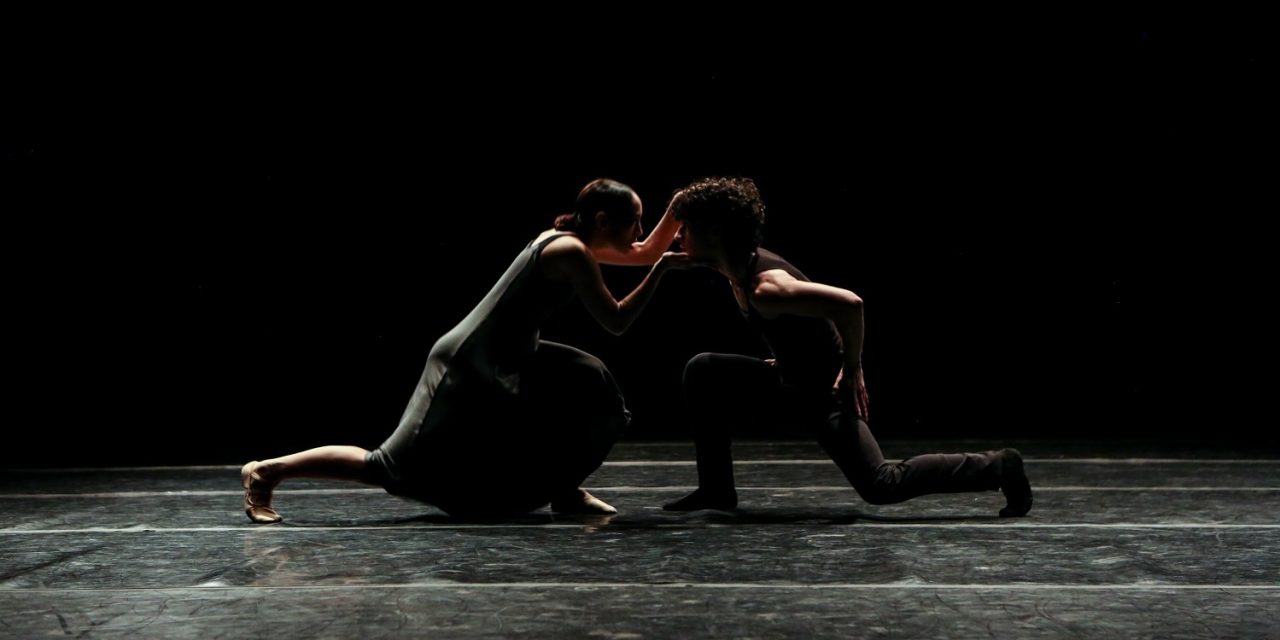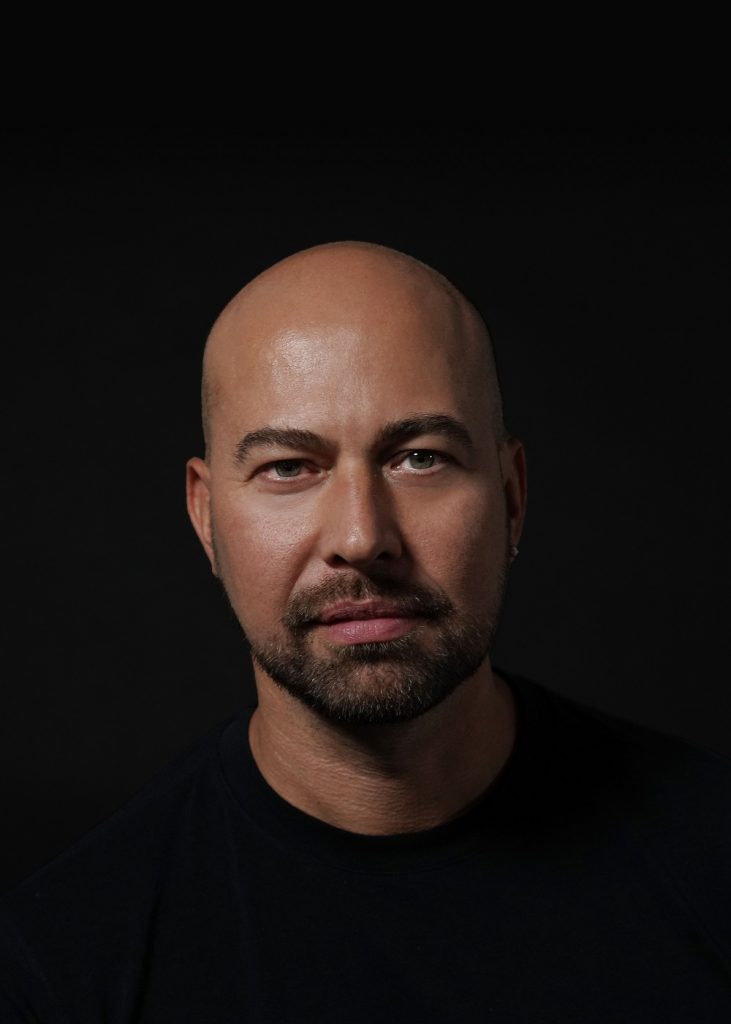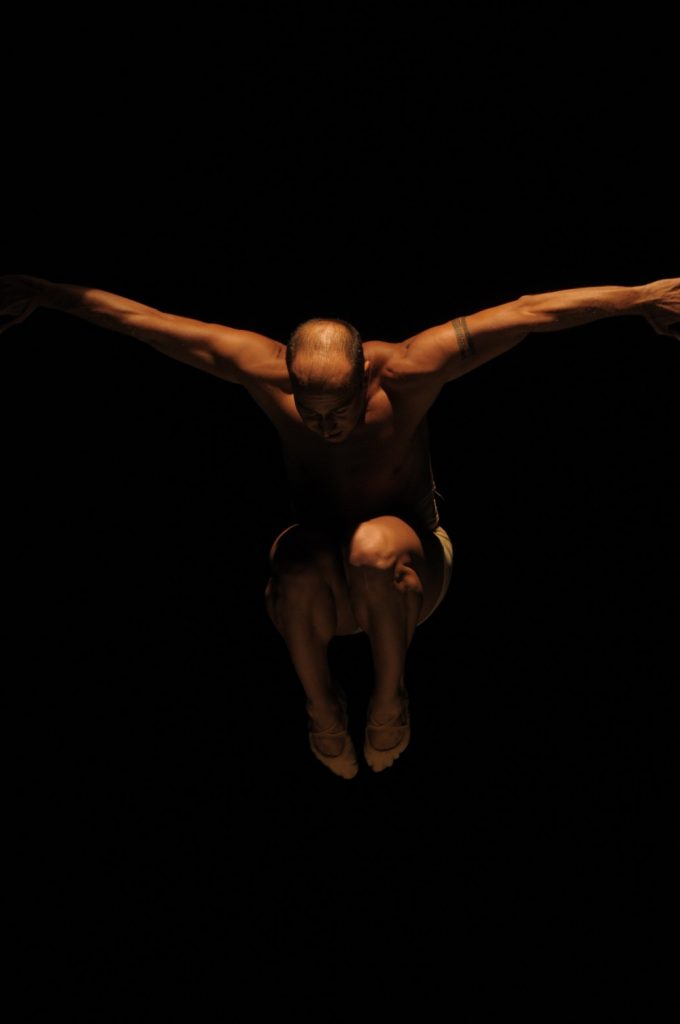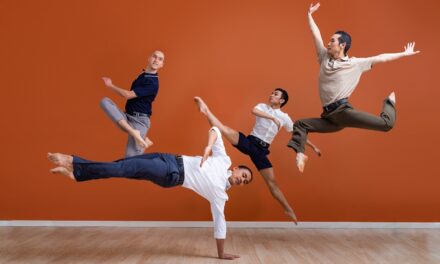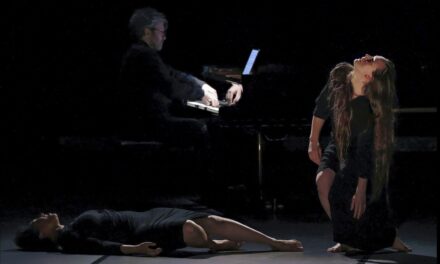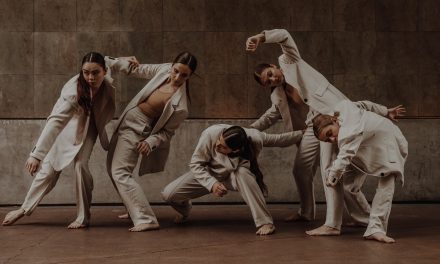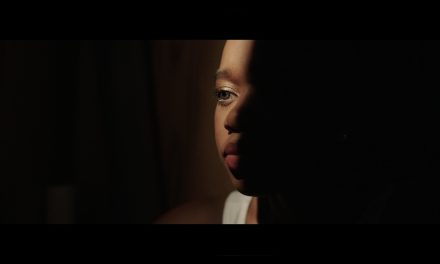Continued from Part I…
Joanne DiVito: So you explained to me how you push the envelope. Joffrey was just that kind of person. So my question here might be, because you now are the Joffrey Ballet Concert Group’s new leader, could you tell me a little bit more about how you see it advancing and expanding?
Bradley Shelver: Well, you know I’ve been a part of legacy companies, as they’re called in the States, since I got here. Alvin Ailey is a legacy company; José Limón is a legacy company. Now, Ballet Hispànico is a legacy company, and I have such a respect for the people that came before us, and how they evolved during that time in their way of thinking in the dance landscape…but more importantly, the human landscapes. You know, works that were about political things and emotional themes … all the things that I feel we know a little bit about in our day and age. There’s this feeling of political correctness where you can’t say that you’re different from somebody else. But my feeling is, celebrate the fact that we’re different. Why does it have to be a negative thing? like your culture and the color of your skin and your religion. Wow! Tell me more!
So, what I would like to do with the legacy of the concert group is to take the idiom of classical ballet, contemporary ballet, modern and contemporary modern, and find a way for it to be, not any of those things, but for it to be all of those things.
Joanne: Yes!
Bradley: I’m not a classical ballet dancer… I’m not a contemporary dancer…. I’m a dancer! I’m an artist! I’m a human being who expresses themselves. And right now, in this performance I’m choosing to put on pointe shoes and express myself this way. But the next piece I’m going to be wearing socks. You know, and I think that’s the beauty of what it is that we do, and that’s what I’ve always seen. The beauty of what I’ve tried to do is I want to connect with you on that level. I don’t just want to connect with you in the fact that we’re all the same. No, I want to connect with you in the fact that… wait a second… What makes you a little different from me? That’s cool! I’m also different from you in X, Y. And Z.
I think that’s really what my focus is for the Joffrey Ballet Concert Group. You know, it’s a big task, and It’s gonna take time because we’re so conditioned to be one way. It takes training. I just know we have to. We have to train ourselves; we have to train our audiences to start to think about dance as a language, and there are many different aspects that make up that language. They’re all good, and they’re all valid, and they’re all exciting.
Joanne: Now…This is inspiring.
Bradley: I’m trying not to get emotional. I like to put it in the perspective that, it’s not that I’m trying to change the world, because who am I to do that? But you know, it’s amazing… you can say one word to someone, and it can stick with them for their entire life, you know, good or bad. And I’ve realized that as a teacher, I will say something to a student, and I’ll see them ten years later, and they say you were the reason why I kept going.
How amazing would that be to be able to have a room of 12 hundred people see a company of these human beings doing whatever it is that they do, and what they love … and they’re good at it. And then have the audience walk away from that performance and they’re changed; the way they look at the world. That’s how I felt the first time I saw Alvin Ailey…especially in South Africa, after Apartheid… a stage filled with black dancers that were just joy and passion. And that was the moment that changed my life and changed everyone in the audience’s lives, and I want to do more of that all the time
I thank god this is not a TV interview. (Wipes eyes)
Joanne: Yes, I know. Even now I listen to the radio, and I hear the announcer saying: “If you’re having problems, we have psychologists,… therapist.” And I say, get them into a dance class, because, as you say, it changes people’s lives… because the arts are really of the spirit, and that’s what lifts the life, the culture.
Bradley: you know, we learn way more from a dance class than just dancing. You learn self-expression, you learn boundaries, respect for other people’s space, how to work together, multitasking, I mean, that’s just dance, let alone working with music …your analytical side and how to combine the right and left sides of your brain. So that’s my life goal!
Joanne: Okay (takes a deep breath). Next question. How do you prepare your students and company members to become artists. Not only to dazzle us with tricks, which often is the case these days. You know… how high, how beyond ninety degrees you can kick.
Bradley: I speak about intention all the time intention, intention because anything that’s done with the right intention… for example. Let’s just say, if you do something with the right intention, but somebody’s feelings get hurt. It’s much easier for you to be able to go to them and say, I apologize if I hurt you, that was not my intention, this is what I was trying to do.
I feel the same way for artists and the choices that we make on stage. What is your intention? What do you want me to feel? What do you want me to experience? Where do you want me to look? Do you want me to just look at your leg? I ask this all the time as a choreographer. If you take this vocabulary that I’ve given you, you take this language that I’ve given you, and you’re expressing yourself through that, that’s what I want to see. That’s what I want to hear. That’s what I want to experience. Because technique is just for the dancer and for the choreographer. The audience doesn’t understand technique. They can appreciate a trick once or twice, but then, after that they’re like, Okay, I’ve seen that…so what do you want me to experience? What do you want me to feel? What do you want me to need here? They don’t understand the height of a passé or a tendue, or a good foot versus a not so well-developed foot. So I tell the dancers all the time, Don’t dance for other dancers, because inherently we’re trained to do that anyway. You know we want, or sometimes crave, the acceptance from our peers. You meet a phenomenal dancer, and you want them to acknowledge the fact that you’re a beautiful dancer.
At least for me as a creator, that’s not where I see our audience coming from. I see them coming from…Here, the curtain hasn’t even gone up yet, and you’ve managed to get a group of complete strangers to pay money to sit in a dark room to see something that they have no idea what it’s going to be… that already is a big step, especially in New York, because, you know New Yorkers, they’re not going to just sit down for anything or anyone.
So I say to them, when that curtain comes up, you already have us eating out of the palm of your hand. What are you going to make us continue to do? Because you can make us lose trust. You could be doing a step or a movement, and you’ve checked out, or you’re looking somewhere else when you should be looking in that direction. And now you’ve lost that audience member, because now they don’t believe you, and you will not get them back for the rest of performance. You won’t. Because inherently as human beings, we have that little distrusting side of us. Oh, you’ve let me down…now prove yourself. We can be like that with people we know and love. Can you imagine with complete strangers?
In an idiom, language or genre that we already feel overwhelmed by… Like some people who come to dance. A lot of audience members are dragged into that situation by a partner or a friend who loves dance, and they say “come and see this show. You’re gonna love it as much as I do.” Okay, they may not. So what? Give them something to connect with, give them an intention that they can understand, and that they can carry with them to the next performance, or to the next interaction they have with somebody else.
I think that’s what I try to instill. That’s what I try and create in my work. Don’t get me wrong, I love technique. But it has to say something…otherwise it’s just little robots dancing around on stage. Or to be a little bit franker, sometimes I say to them, I don’t want you to look like a little piece of meat in a leotard. What is that? Give me something more than that. I hope that I guide them to find the tools to be able to do that, and that’s the teacher in me. It’s one thing giving somebody a correction or a note. But another, Can you give me some idea of how to get to that point? That’s what I want my dancers to do for the audience? Here is a feeling, here is a sensation, here’s a step, I want you to connect with this performance so that I can give you the tool to connect with something else in your life.
Joanne: Wow! This reminds me of the great choreographers of the past (some I actually worked with). You just knew there was an ethic about what they expected from you, it had to be authentic. It had to be! They already picked you for the technique. So, with that in mind, how do you actually pick your dancers and choreographers?
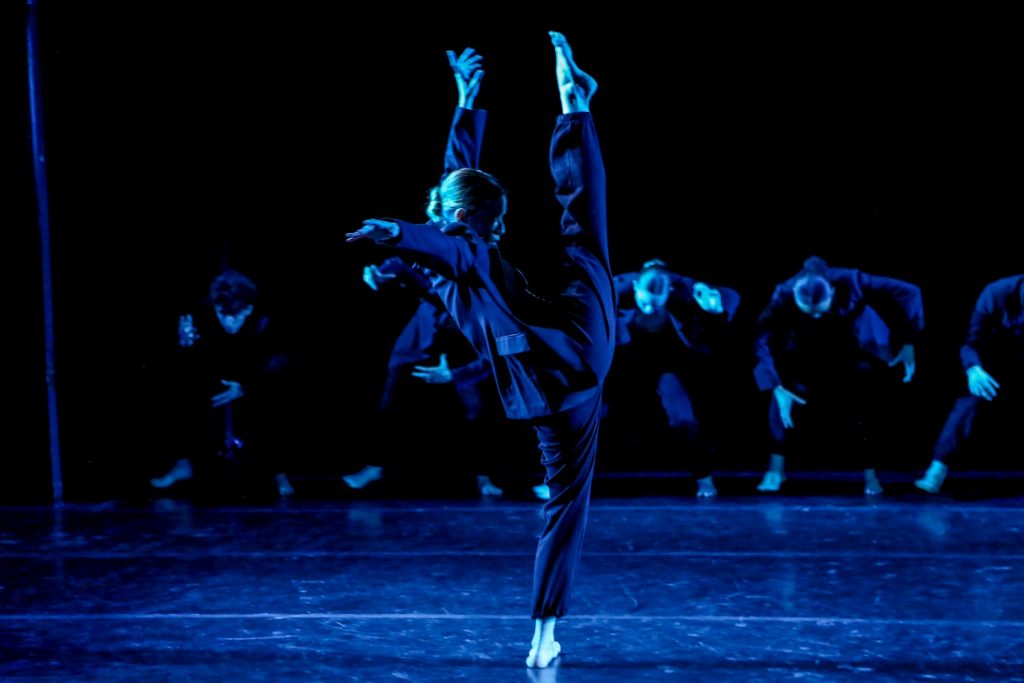
Joffrey Ballet Concert Group in “Tip Toe Thru’ the Tulips with Me” a premiere choreographed by Omar Ramon De Jesus Danced by: Laura Mendes, Aliya Janov, Matt Retcho, Antonia Garcia, Jenna Rotondo, Ashley Nazzar, Devon Custalow, Ariel Marks, Laura Goossens – Photo by Julie Lemberger
Bradley: You know, it does get difficult, especially in the situation with the Joffrey Ballet School, because we have so many phenomenally talented young and developing artists that come through those doors. And in my experience with all the companies that I work in and all the schools that I teach in, I see a lot of that every day. I still teach at the Ailey School. I’m surrounded by talent, and I hope that I have started to be able to gauge.
I don’t want to say what makes you special, because I feel like everybody has something special about them. Looking at somebody and seeing how they are able to access the thing that makes them special is what I’m looking for. They are probably unaware of what that is at this stage but seeing what they’re able to access that comes through their pores as they’re moving is what I’m looking for.
I have a dancer in the concert group, she’s 13 years old. She moves like she’s gone through five different lives before this… and this is what she did, and… it’s emotional….I asked her to demonstrate this choreography that I was working on… and the way that it came out of her… You know I just said, “You are an old soul, and the magic that you have…you don’t even know that you have, because it is just who you are.” I think that’s how I pick my dancers and my choreographers.
I want people who are going to challenge that, and who are going to awaken that aspect in these young performers to get them to think about themselves in that way. because, like I said for me, this is not a job. This is who I am. This is how I’ve chosen to live my life… and dance has also chosen me. That’s a very big thing that I tell my students… you might choose dance, but dance also has to choose you. And I try and give them the tools, we as educators and artistic directors and choreographers, try to give them the tools for dance, but also dance has to pick you. This is my style, it’s the way that I move… but if it’s not resonating for you, if you’re not allowing yourself to access that side of you…just to be able to simulate this language and for it to be spoken as a native tongue for you, then It’s not going to work.
I think that’s what I look for. I look for dancers and choreographers who have a sense of being able to access that, either within themselves or in others. Dancers that inspire me to be creative. That’s what we need. You know we’re not hiring dancers anymore. We’re hiring creative movers. We’re looking for artists that are able to think for themselves. There’s nothing worse for a choreographer than to be creating something and we hit that creative wall where we’re not sure about how to transition, and we turn around, and there’s a group of dancers with their arms crossed, looking at us like, Well, show me the Step. What do you want me to do?
Sometimes they might say, Well, Tell me what you want me to do. Tell me what you want me to think. Tell me how you want me to solve this problem. What I’m trying to get these young dancers, my students, to understand is… No! You tell me how you’re going to solve this problem, and I’ll tell you whether that’s a choice that I’m going to go for as a choreographer… or maybe I want you to solve it in a different way. You make that choice.
That also goes back to how I choose my dancers. I want to look at a room full of people that are problem solvers and that are able to say…I’m going to try this. It’s probably going to be a huge risk, and I’m going to fall flat on my tuckus, but I’m going to try it anyway, and let’s see how that goes. Because isn’t that what we do in a life anyway? I say this to my students all the time, The more we fall, the more we learn how to recover.
That’s what I learned in the Limón Company. Limón was such a different way of moving for me. It added so many layers to my technique and my shape orientated body and all I was doing in that company was falling, falling, falling, but at the same time I was in that place as a human being where I was realizing, Okay, but I’m also recovering, recovering, recovering. That’s what I want.. I want a group of dancers that are falling all the time and recovering in the same breath.
Joanne: That deserves a hug… I have been thinking…I’m seeing such flat dancers, flat choreography. Is somebody going to come along and make dance, dance again?
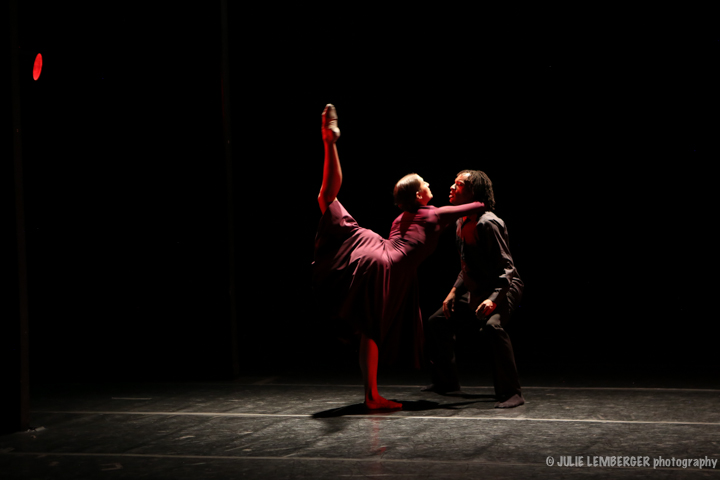
Joffrey Ballet Concert Group – “Babel” choreography by Bradely Shelver, Dancers: Antonia Garcia, Alfred L. Jordan II*, Aliya Janov, Nile Baker*, Laura Mendes, Matt Retcho, Jenna Rotondo, Devon Custalow, Ariel Marks, Ashley Nazzar, Hang-Yu Liu – Photo by Julie Lemberger
Bradley: A virtual hug. I mean, you know I’m hoping that I’m successful. You know that I have those moments. Again, it’s the intention. I feel like that’s what counts. You know that that is my intention, and whether that is always successful or not is also part of the journey. I have to fall too, to recover. I have to and having a group of people or an organization like Joffrey, for example, for me right now, who’s giving me the support and the freedom and the space to be able to fall, and then to be able to figure out how to recover…that’s what I want to give my dancers, and what I would love for us to give our audiences again. All of us, you know, as artists. Here is something, and in this something, I hope you can recognize that It’s okay for you to stumble. That it’s okay for you to not always make the best choices, but as long as you’re coming out of that with understanding that you made this choice at this point… because we are the sum total of our experiences, but that doesn’t necessarily have to be the thing that defines you, right?
Joanne: Yes, it’s just a choice.
Bradley: You’re not defined exactly by your technique. Right? In your eyes you are. But that shouldn’t be the thing that defines you. It should be the thing that gives you the freedom to also understand that there are other aspects that you bring to the table. And for me as a choreographer, that’s why I love doing contemporary dance, and creating contemporary works… And also… I love creating classical works on pointe, and I love, you know… because why should I be defined by one genre of dance? Why, like I said, why should I be defined by one language? Why should anyone be defined by the color of their skin, or their sexual orientation, or their political beliefs? Have them! But that doesn’t necessarily have to be the thing that defines you. It can be the one aspect of you that you hold steadfast. But just be open to the things…the other aspects of people. Open yourself up to other experiences.
Joanne: right, right. Now this brings up one last question. Are we going to be able to see Joffrey Ballet Concert Group in Los Angeles?
Bradley: Well, you know the company has been on a hiatus for several years, so we are starting to piece [together] repertoire and touring, those sort of aspects. I’m hoping very soon. My goal is to get us out there. I mean, as is every artistic director’s goal, it is to get their company working and out there as much as possible. We don’t have any definite dates as of yet for the West Coast. I also want to be very conscious of the product that we are delivering. Making sure that we are, even though we’re reinventing ourselves, that there is still that tie to the history and the legacy of Joffrey, but also making sure that there’s a clear vision that’s coming out of that.
We’re just starting from scratch essentially in terms of the dancers and rehearsals and repertory. So that may take a little bit of time, … or not. Who knows? Maybe all of a sudden we’ll get this rush of, We want you! We want you. We want you, and already I’ve had presenters and connections that have followed…and been a part of the concert group’s journey in the past. They’ve already reached out and said, Oh, my gosh, you guys are back. We want to restart that connection again, and the performances. So, hopefully. Someone in L.A. will reach out and say…”Come and dance for us.”
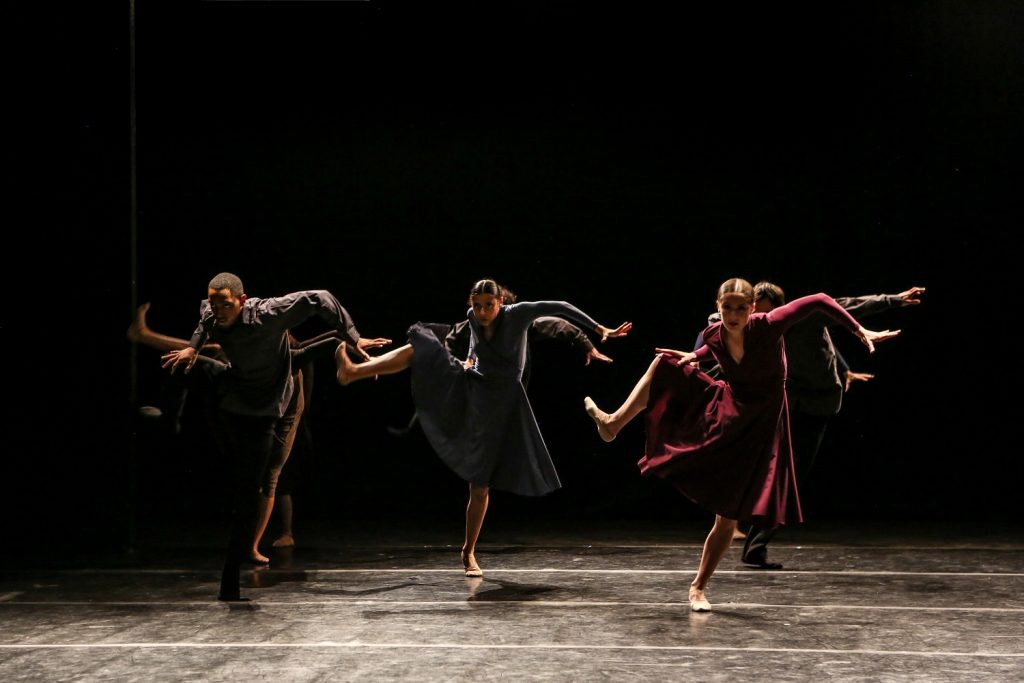
Joffrey Ballet Concert Group – “Babel” choreography by Bradely Shelver, Dancers: Antonia Garcia, Alfred L. Jordan II*, Aliya Janov, Nile Baker*, Laura Mendes, Matt Retcho, Jenna Rotondo, Devon Custalow, Ariel Marks, Ashley Nazzar, Hang-Yu Liu – Photo by Julie Lemberger
Joanne: I would love to see what you’re doing out here on the West Coast. Now, since your time is valuable. Anything you’d like to leave us with?
Bradley: Support the arts! I feel like, cultures are not just defined by what it is that they’ve done, but who it is that they are. There’s plenty of space in the dance landscape for all the companies and all the choreographers, and all the dancers. Joffrey has such a strong legacy, I would just like to continue that openness…so in a nutshell, support us. We’re not for profit…as are most dance companies, we have been on a hiatus for several years, we’re rebuilding our board, and looking to find people that are as excited, passionate, dedicated and expressive, who want to be a part of that journey with us. We need people who support and have connection to it and who recognize passion and dedication, who recognize joy in what it is that people do. I would love for more people like that to show up for us, to show up for dance, to show up for the arts and to show up for the Joffrey Ballet Concert Group.
Joanne DiVito: This has been for me such a loving experience. I can’t describe it any other way because I see that there’s a future here and I feel hopeful.
Bradley Shelver: Thank you. And you know we are all a sum total of our experiences, and I just hope that those experiences keep allowing people to experience the arts.
To read Part I of this interview, please click HERE.
To learn more about Bradley Shelver and the Joffrey Ballet Concert Group, please visit their website.
Written by Joanne DiVito for LA Dance Chronicle.
Featured image: Jeffrey Ballet Concert Group – “She and Him…..” choreographed by Bradley Shelver, danced by: Antonia Garcia and Matt Retcho – Photo by Julioe Lemberger

